The summit of Vancouver Island’s Triple Peak is a technical climbing objective only reachable by those with the experience and gear, however the picturesque lake just below the peak is becoming an increasingly popular destination amongst hikers. The trail up to Triple Peak Lake utilizes the same route that leads to the summit, but stops short of where it becomes technical past the lake. The hike up to Triple Peak Lake isn’t a walk in a park though – it’s a rough and rocky ascent up alongside a series of waterfalls with several short scrambling sections. The quality of trail is typical of this region of Vancouver Island, though the short length of the Triple Peak Lake hike makes it a great introductory hike to the area.
Concerningly, there’s a lot of misinformation spread by people confusing the hike to the lake with the climb up to the summit, and the fact that they are listed as one and the same on Alltrails only compounds the problem. This a genuine safety concern, as people are being lead to believe that it’s possible to hike to the summit without gear, and as a consequence may find themselves in terrain that they are entirely unprepared to safely ascend or descend back down. So let me be clear: Triple Peak Lake is a hike, but Triple Peak itself requires ropes, helmets, and climbing experience.
Continue reading this blog post for everything you need to know to experience the Wesley Ridge hike near Port Alberni for yourself, including distance, elevation gain, how to get there, the best time to visit, and lots of photos of my experience.
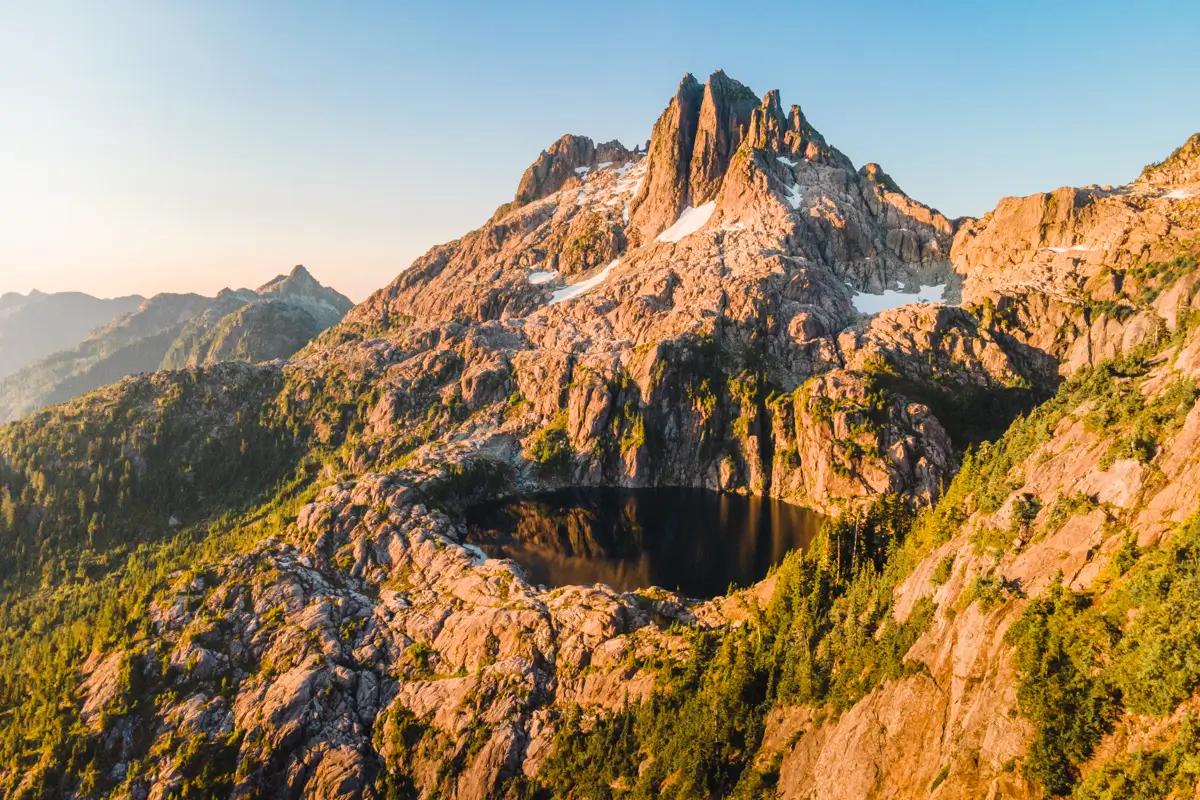
When hiking it’s important to avoid harmful practices such as disturbing plants or rock-stacking, or removing any natural object from flowers to rocks, as it’s important to leave the environment as natural as possible for the animals and for fellow hikers to enjoy in perpetuity. As many flowers as there are, there are few enough that if we all took one, then there wouldn’t be any left. Take only photos, leave only footprints.
If you haven’t heard of Leave No Trace principles, they’re also really essential to read up on before heading anywhere into the outdoors in general. Following these important principles basically means doing your best to leave beautiful places like Triple Peak Lake as good (if not better) than you found them, both for their preservation and for the enjoyment of other visitors.
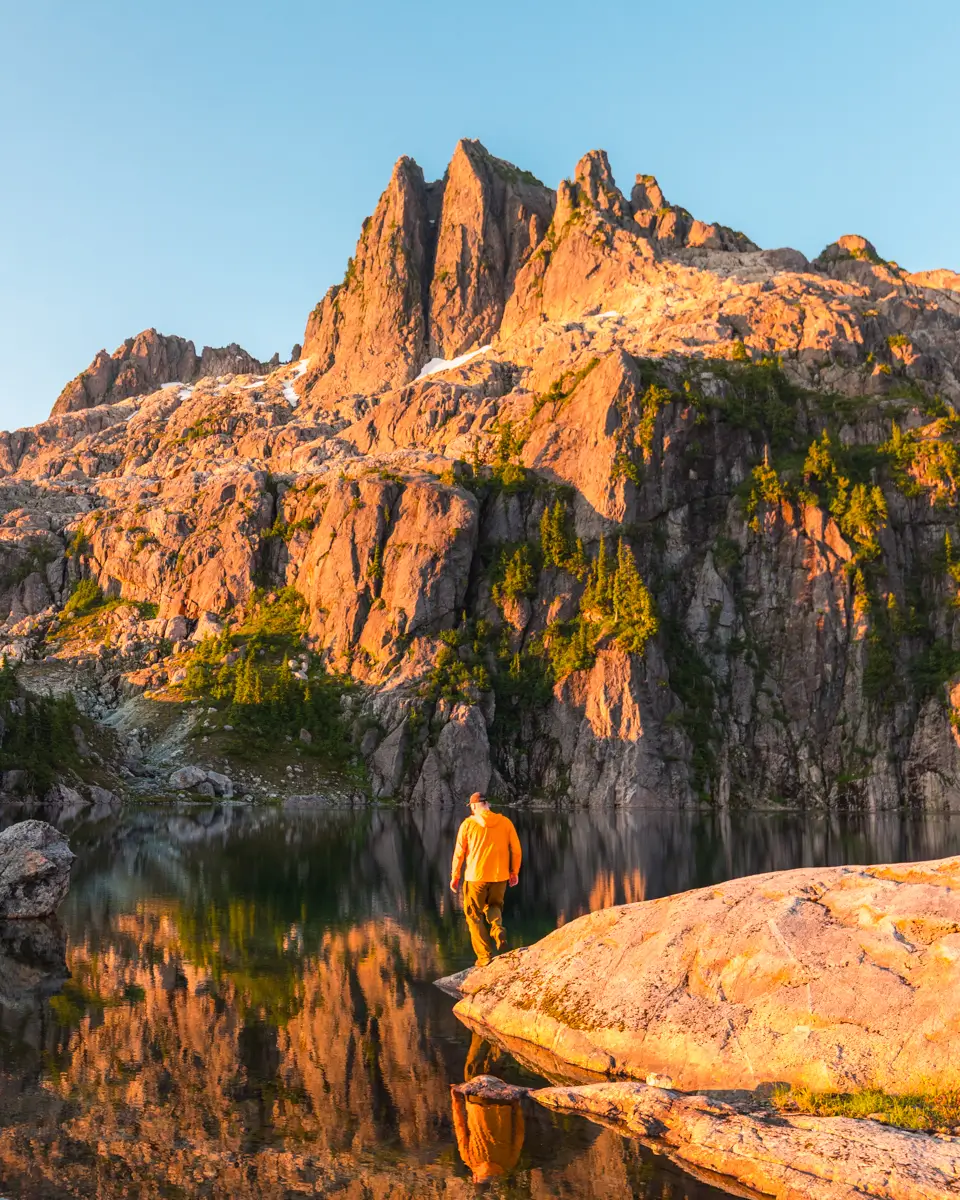
Triple Peak lake Round Trip Details
Distance: 4.2 KM / 2.6 MI
Elevation Gain: 437 M / 1434 FT
Hiking Time: 3 Hrs
Hiking & Safety Tips
Prepare for the possibility of wildlife encounters. There are almost no grizzly bears on Vancouver Island, but black bears are still common. Bear bells are proven to be an ineffective bear deterrent, and are even actively discouraged by Parks Canada. The best way to let bears know you’re around is simply to use your voice. Make sure to keep a respectful distance from wildlife and never feed the animals. It may seem kind but it doesn’t just kill wildlife and put people in danger, it’s also in many cases illegal.
More tips for hiking in bear country.
Research current trail conditions and make sure you are well-informed about the route before you leave, and assess if it is within your capability. The hike up to Triple Peak Lake does involve some scrambling. Make sure you know what that is. Be aware of what time it gets dark and check the weather forecast. Make sure to tell someone where you’re going and when you expect to return. Every year as more and more people try hiking for the first time, the number of rescues goes up. Being prepared is the best defense.
More information on staying safe in the outdoors.
Pack everything you need for a successful hike, including enough water and energy-rich snacks. Remember to pack out everything you pack in though – don’t expect to find a convenient garbage can halfway up the trail. Bring appropriate layers (remember you’ll warm up once you start hiking) and sun protection. Hiking poles may be helpful but are not required. In addition to not leaving any garbage on the trail yourself, I highly recommend bringing a garbage bag and collecting any trash that you do see on the trail. You’re guaranteed to make the hike up to Triple Peak Lake a more enjoyable experience for the next person.
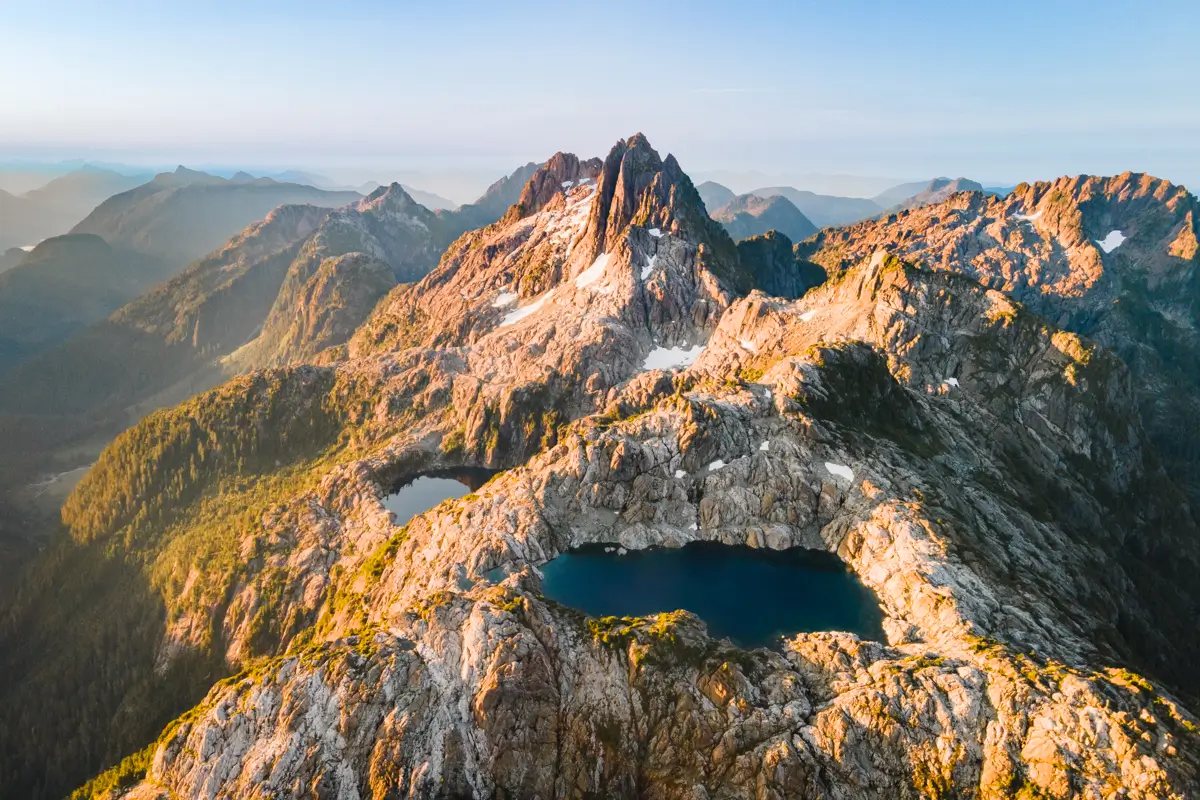
How to Get to Triple Peak Lake Trailhead
Triple Peak Lake is located just across the valley from Cobalt Lake and 5040 Peak, and the the trailheads are just a few minutes from each other along the same road. The trailhead is just over an hour from Port Alberni, or closer to an hour and a half from Tofino. There’s no cell service almost the entire way between the two towns, so I highly highly suggest downloading a map ahead of time, as the turnoff is easy to miss.
From Port Alberni, drive west towards Tofino for about 35 minutes. The highway passes Sproat Lake and soon after begins to head south. Not too long after, turn left onto Marion Creek FSR. It’s an unsigned gravel road that’s easy to miss.
From the Tofino/Ucluelet junction, drive north for about 35 minutes. Turn right onto Marion Creek FSR. It’s an unsigned gravel road that’s easy to miss.
Marion Creek FSR has been recently graded, and wasn’t challenging for me to drive in a prius, so it’s safe to say that prettymuch any car can make it to the Triple Peak Lake trailhead. It took me about half an hour to drive the FSR, but depending on how carefully you need to drive, you may take considerably less time. After about 9.6 km down the FSR you’ll pass the 5040 Peak trailhead, which nowadays is often quite busy. Continue past it for just under another kilometer before turning right at a junction. Just down the hill from the junction is the parking area for Triple Peak Lake. The trail starts at the end of the road. Google Maps hasn’t mapped the last couple kilometers of road, so the Google Maps pin I’ve provided ends just short of the trailhead. If you use my pin, keep driving past where it takes you to reach the junction.
Click here to open the location of Marion Creek FSR in Google Maps.
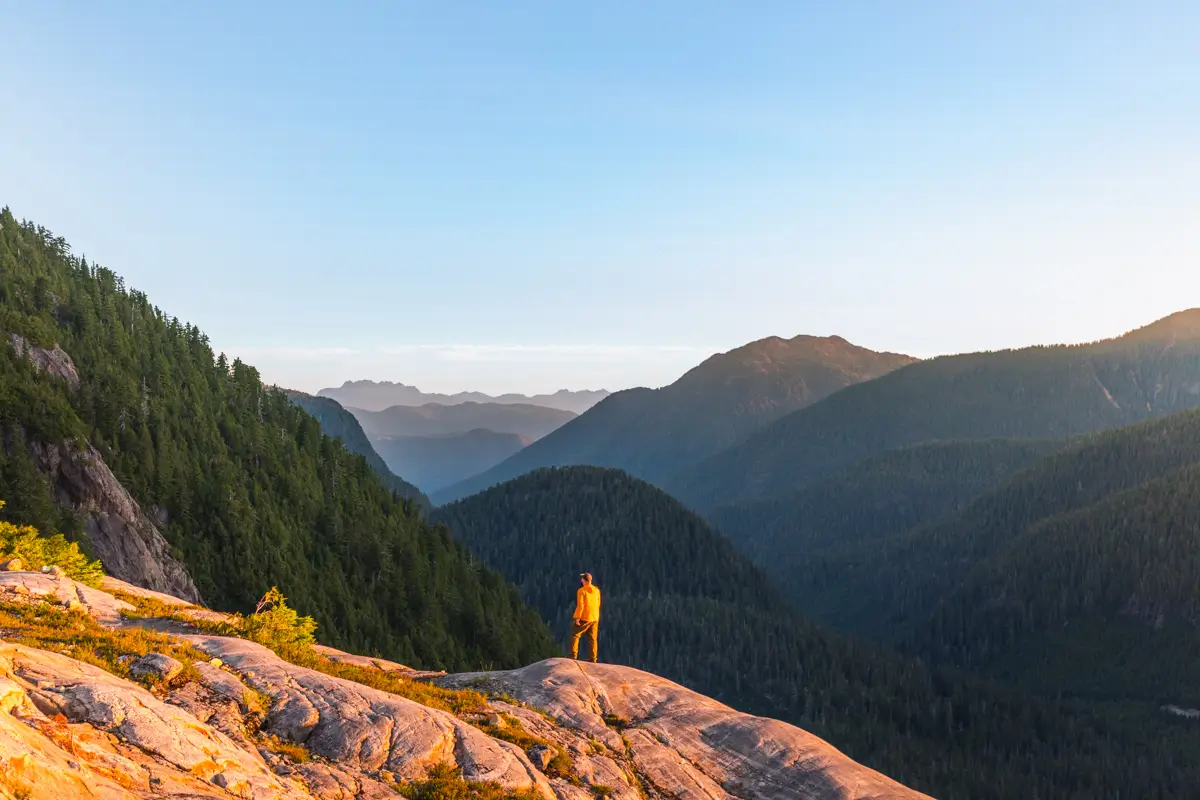
Hiking to Triple Peak Lake
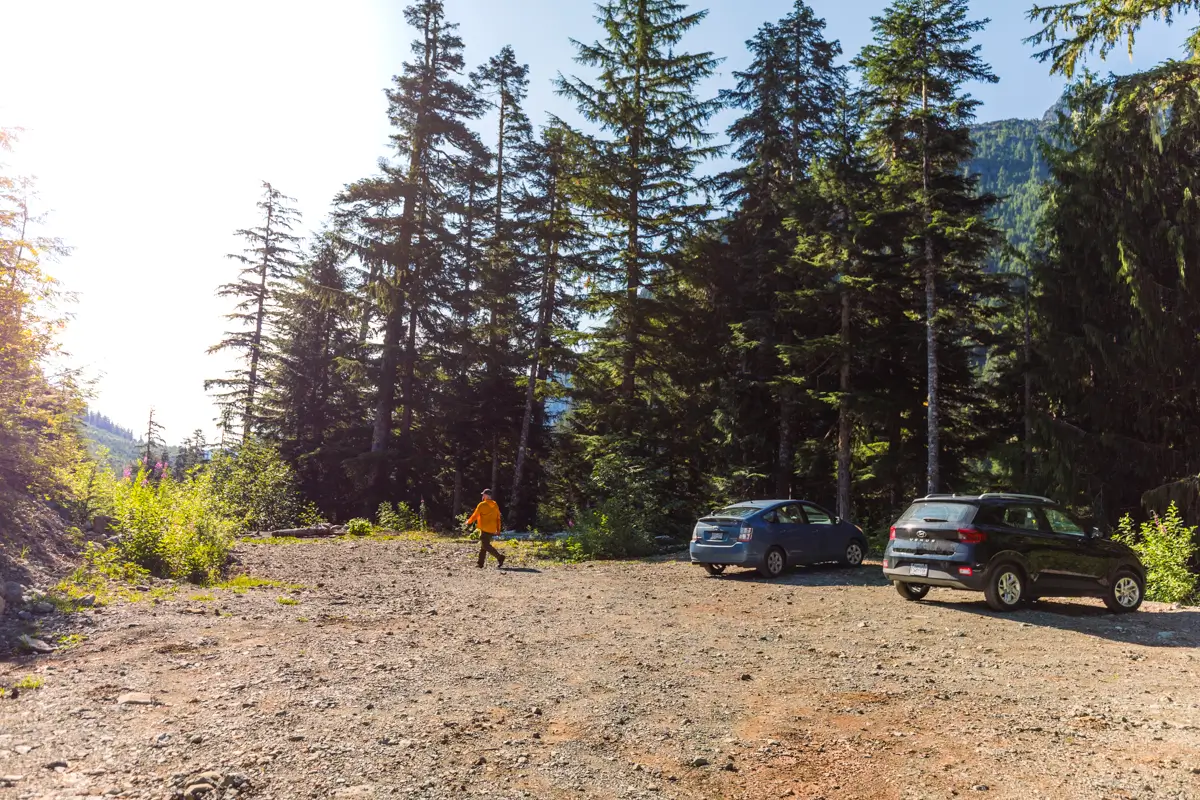
The start of the Triple Peak trail. There were only a few cars parked here, however I passed a couple dozen parked at the 5040 Peak trailhead along the way. From the small parking area, continue walking down the gravel road to where the trail starts.
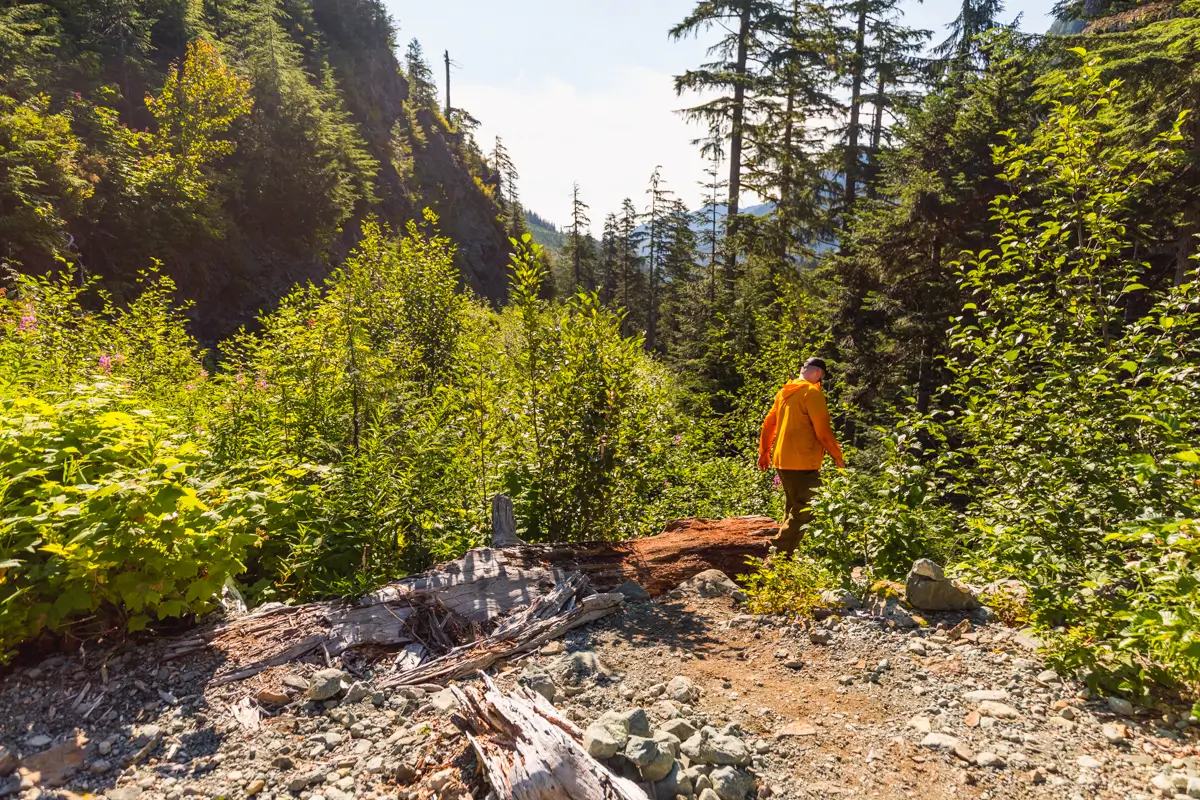
At the end of the road, just a minute past the parking area. From here the Effingham River is already audible through the trees. It’s difficult to see the start of the trail until you’re right on top of it. The trail heads sharply to the right once you climb over the other side of the log visible here.
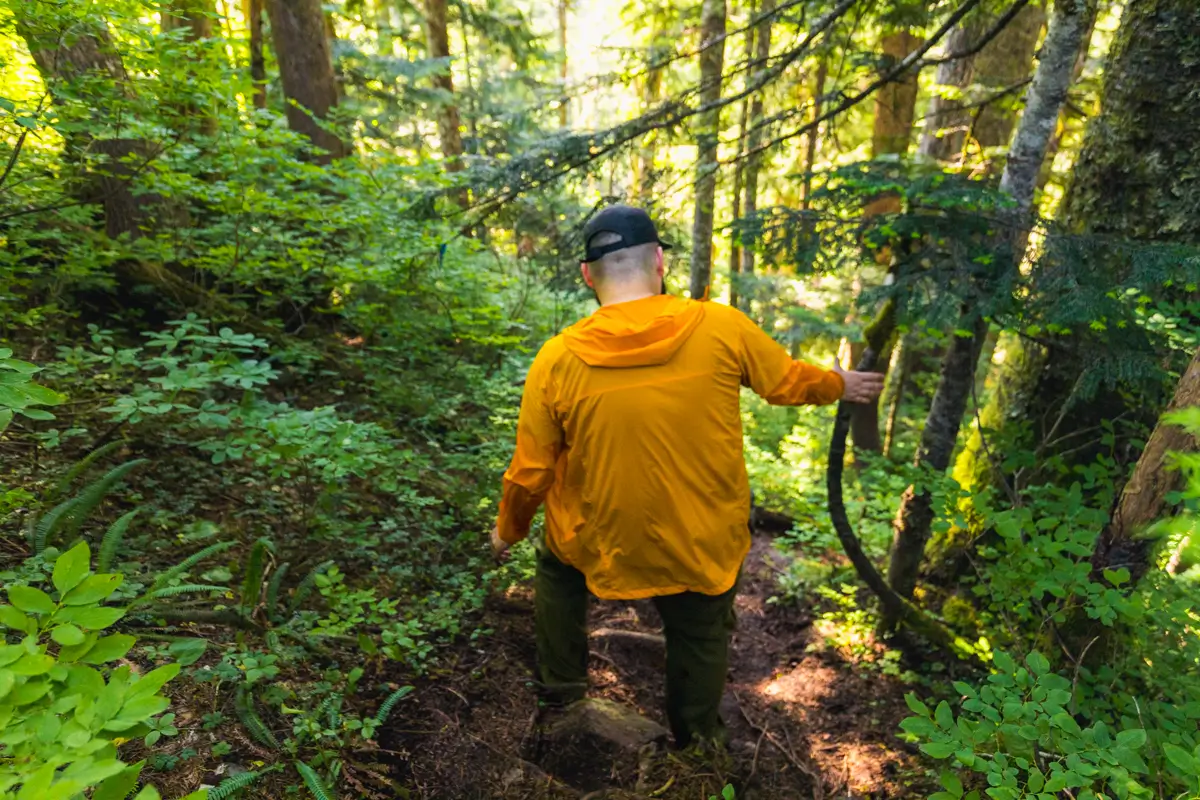
The trail begins downclimbing steeply to the Effingham River. Most painful is knowing that once you finish the descent to the river, the trail climbs back up just as steeply on the other side. This first section of trail feels like one of the most consistently steep of the entire trail, so at least it’s good to get it out of the way early.
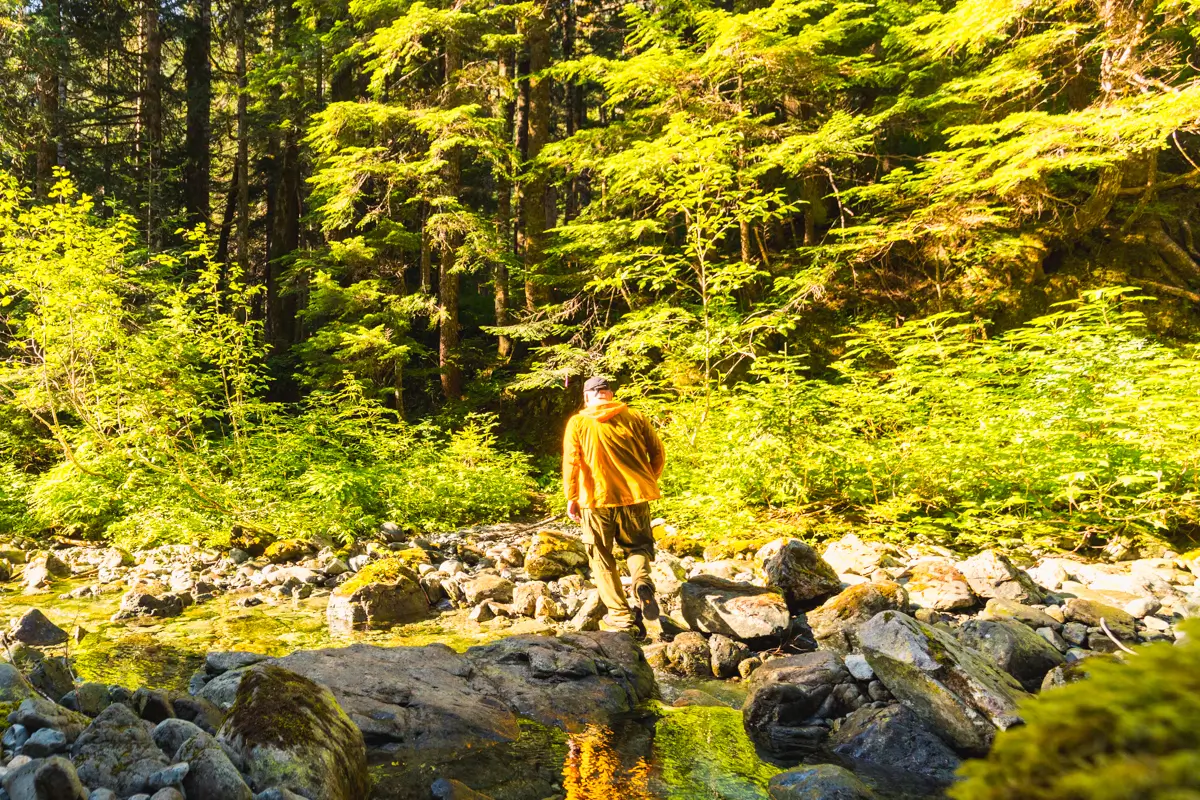
There are a couple of spots where it’s possible to cross the river depending on water levels and your comfort level, but regardless of where you cross, the trail resumes on the other side and heads to the left.
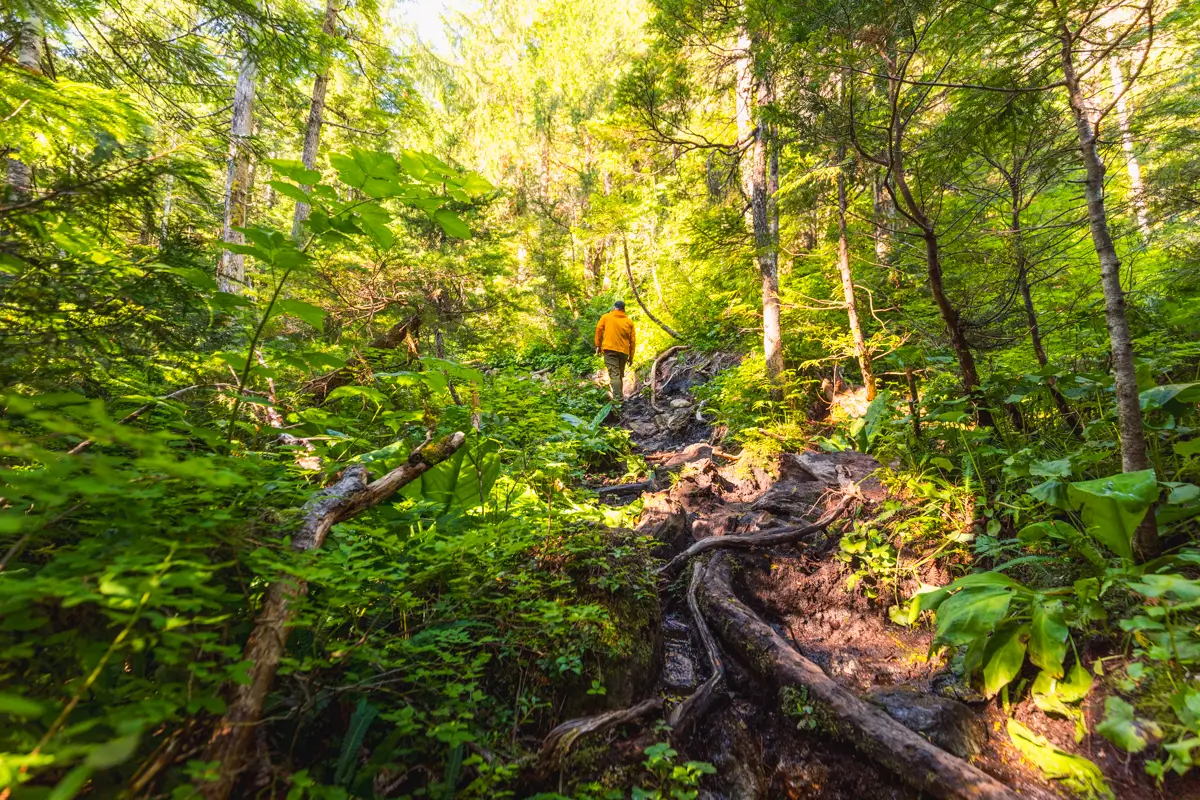
Climbing up on the other side of the river. This section was fairly muddy even in summer, so prepared to walk through some mud. Make sure to stay in the center of the trail – walking along the edges to avoid mud only widens the mud puddles and tramples vegetation.
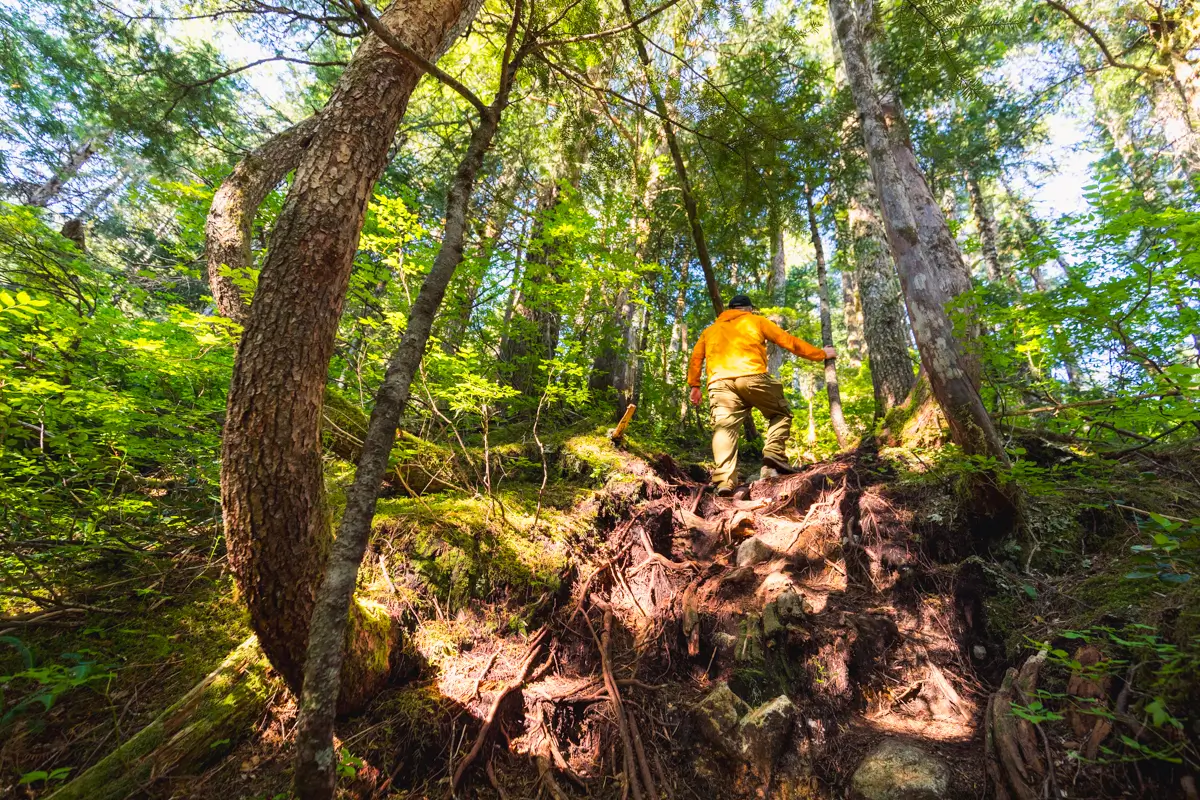
Continuing steeply up the other side of the river still. This is still the least fun part of the Triple Peak Lake trail, likely something to do with the fact that its also the only section without any views.
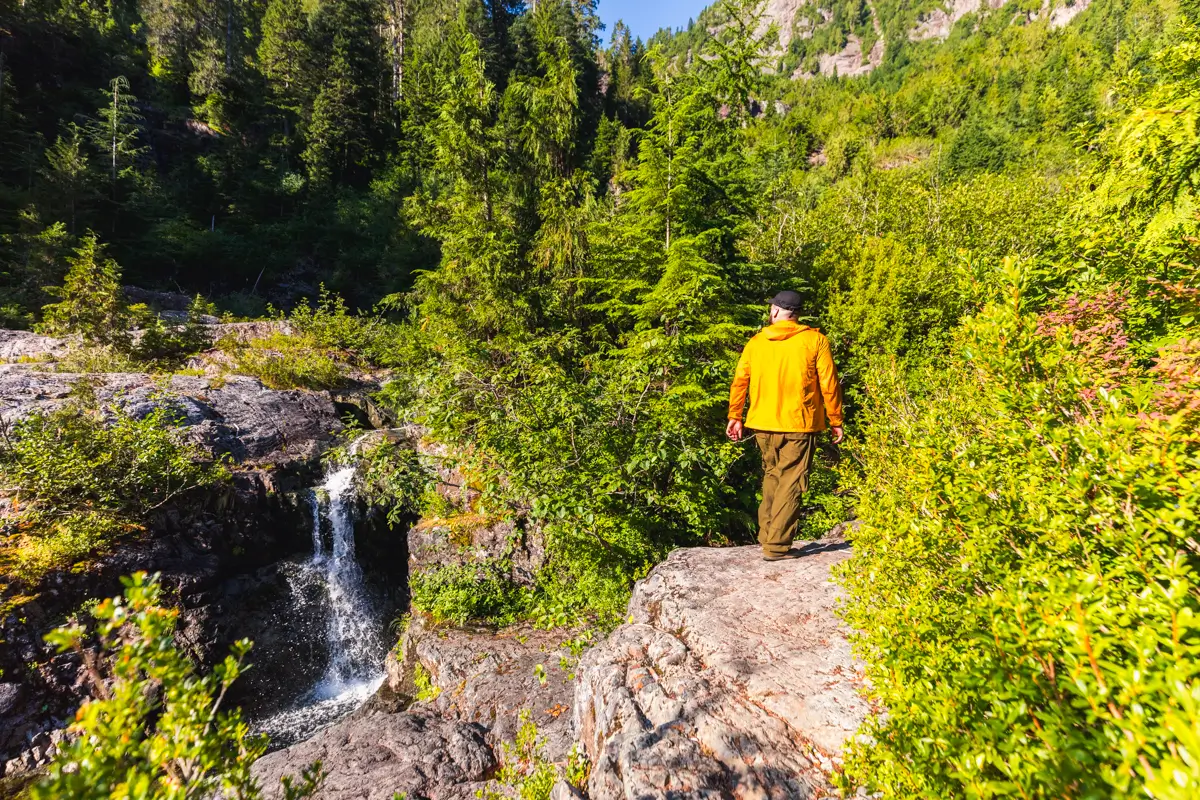
The first of many waterfalls that the trail wind sits way up and around. For the first several, the route continues up to the right side of each waterfall.
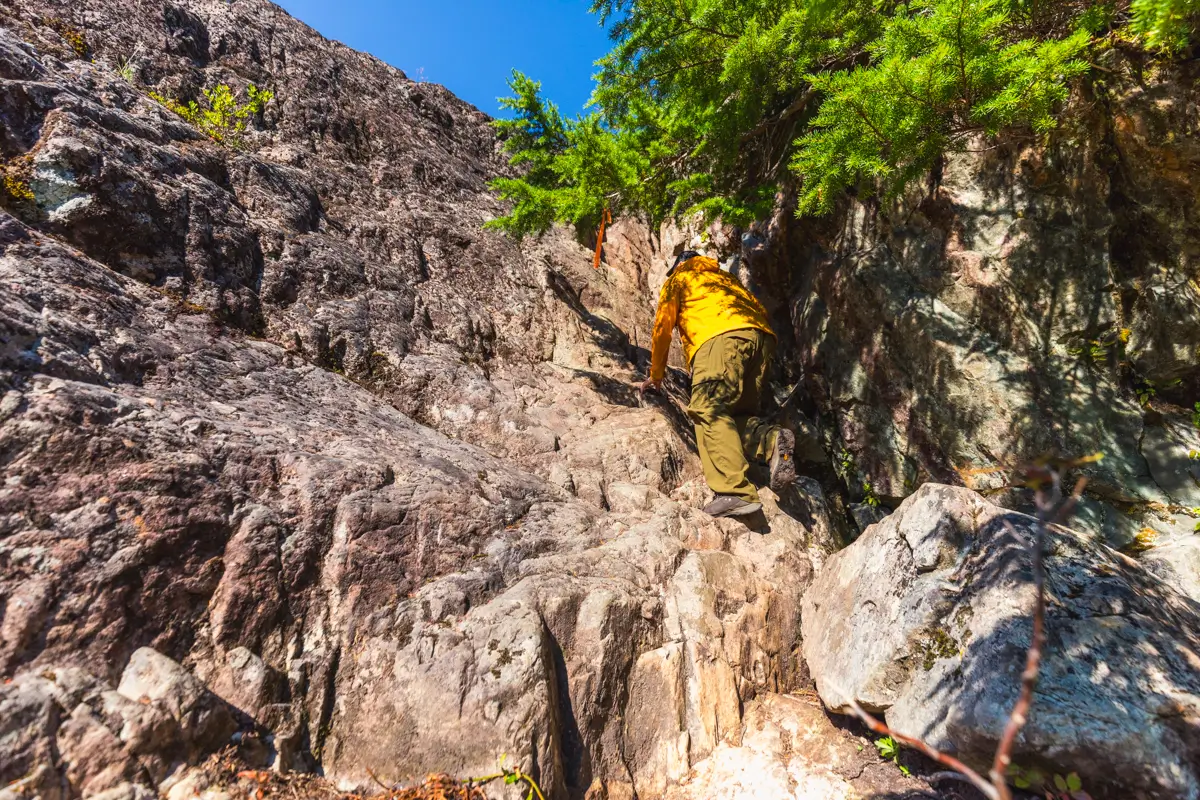
The steepest scramble of the entire route, just past one of the first few waterfalls. Note the orange flagging tape marking the route.
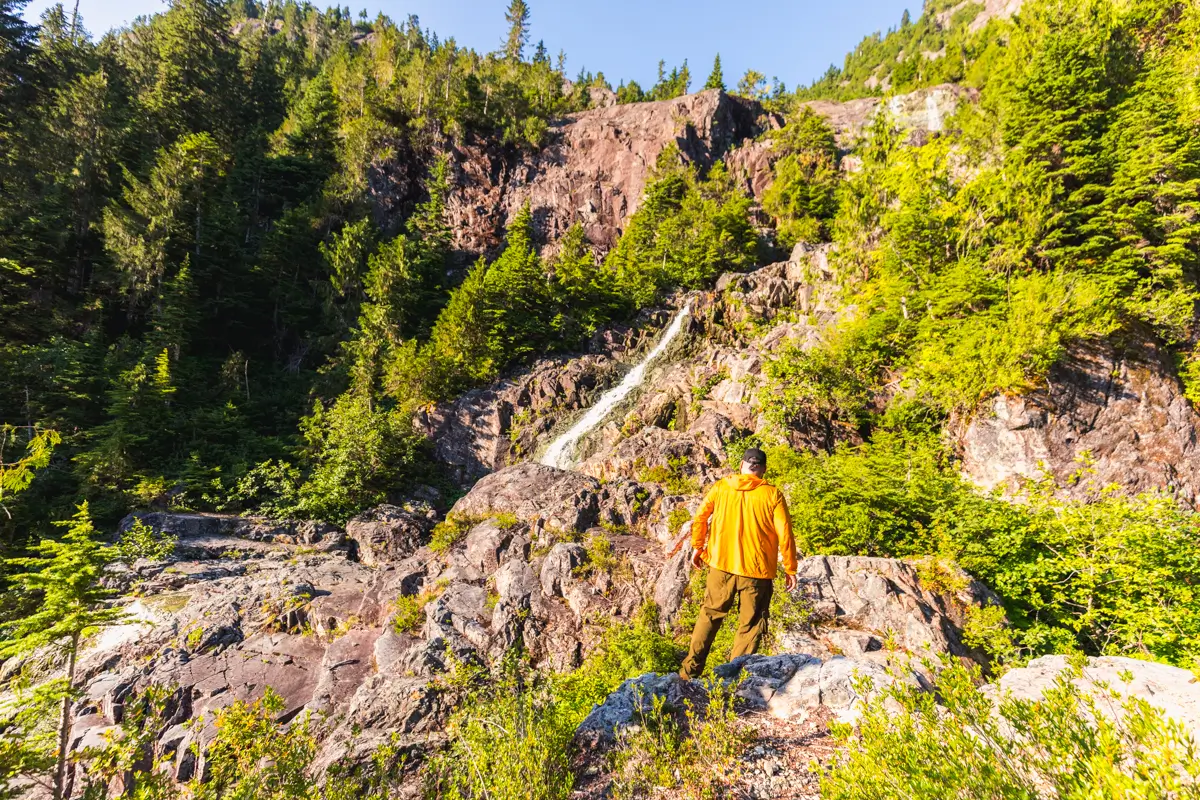
The trail heads up alongside several waterfalls in a row here. While it may be difficult to see in this photo, the route is actually well flagged.
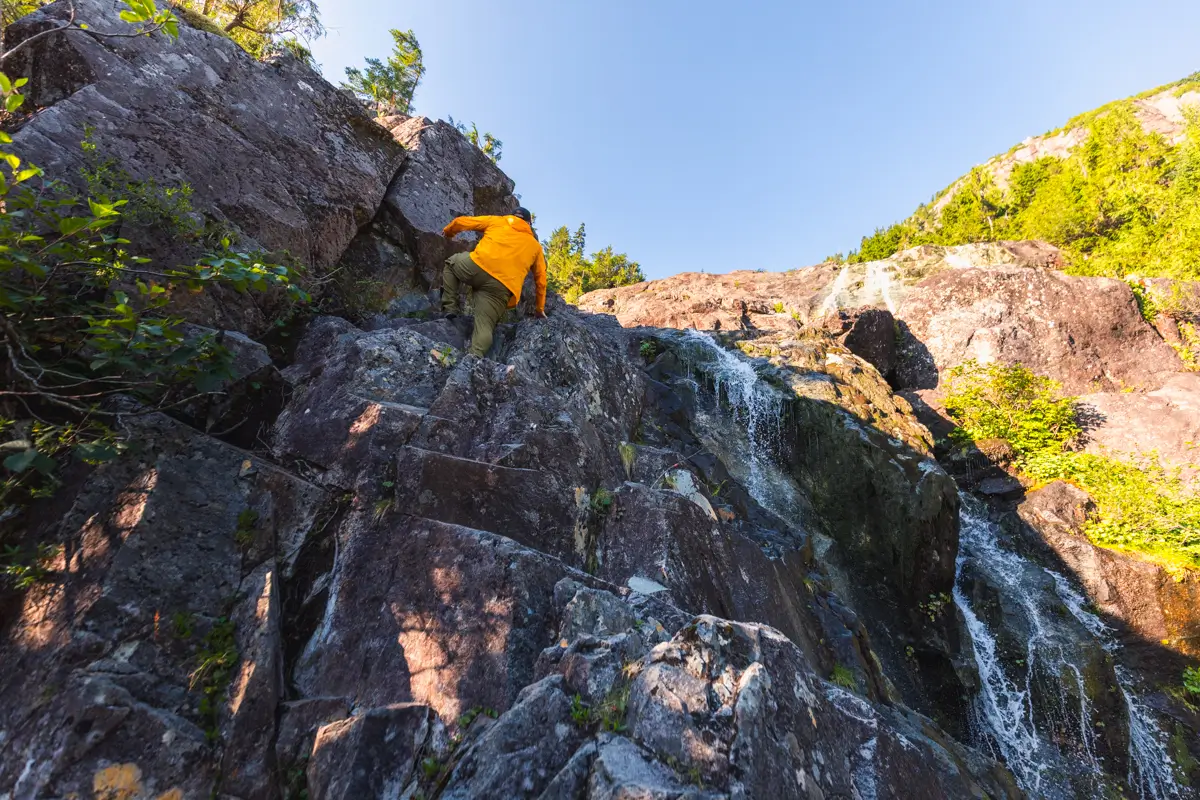
One of my favourite sections, where the trail crosses the creek and scrambles up right next to this waterfall.
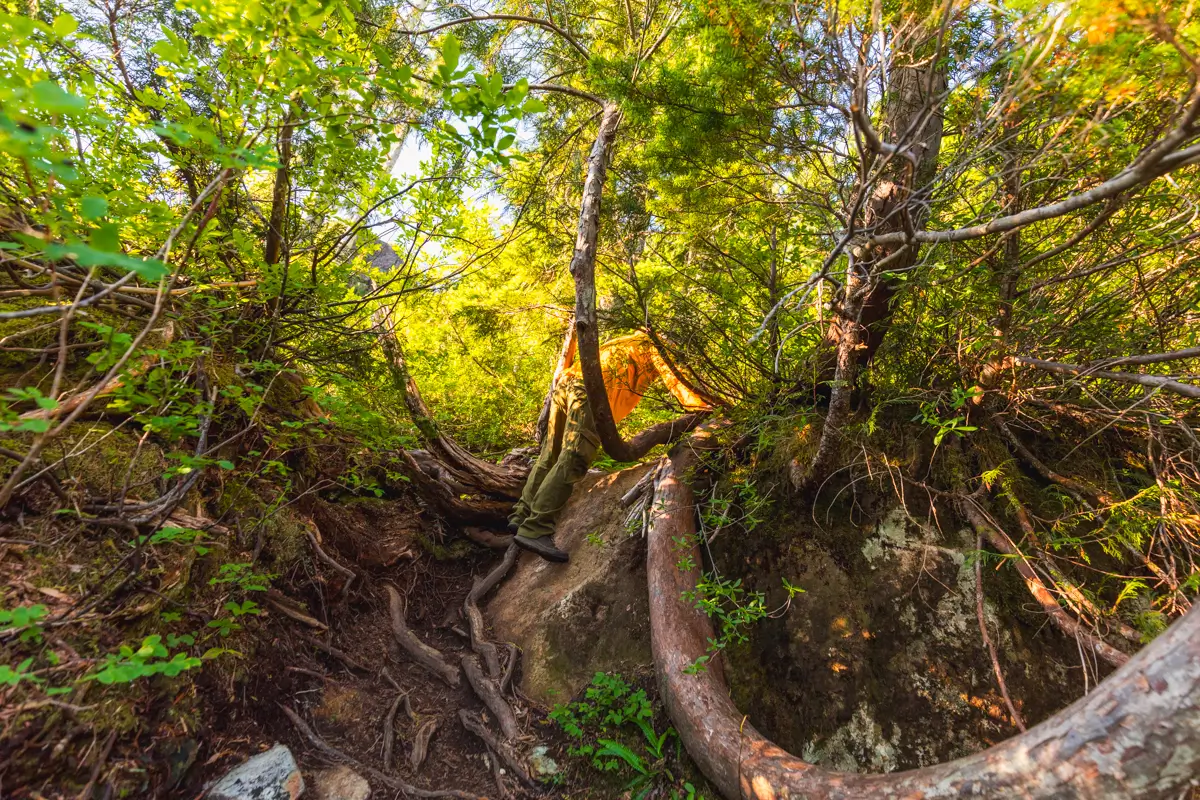
Between waterfalls, the trail winds in and out of the trees. There are a few obstacles to climb over in the trees as well.
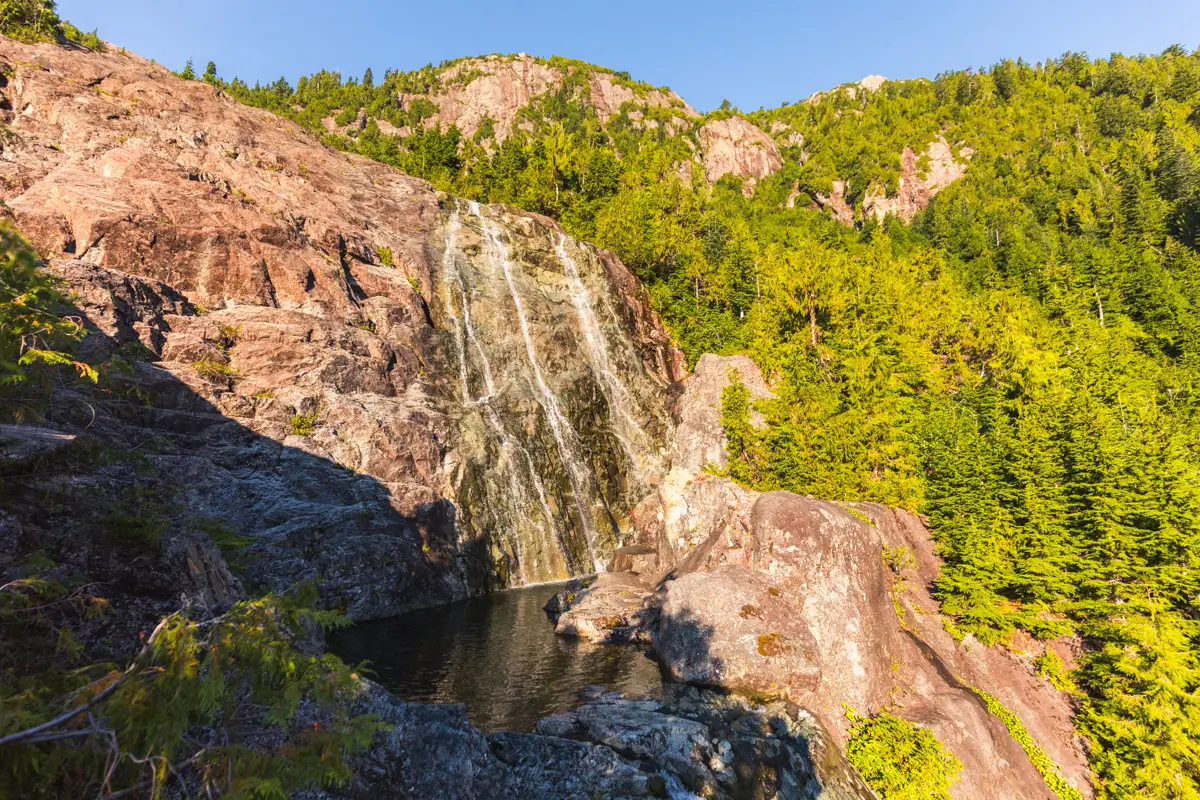
More attractive waterfall views. This is from just above the scramble in the last photo.
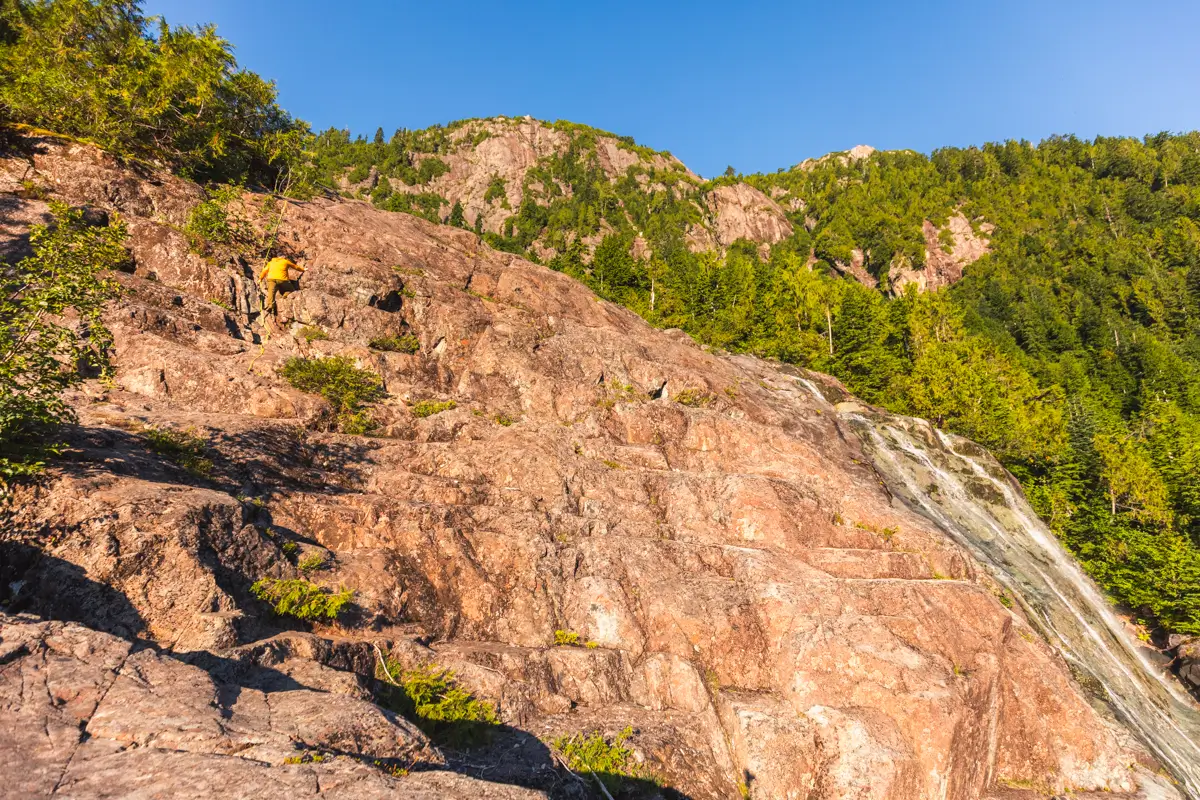
It’s impossible to see in this photo, but there’s a rope in this section to help guide you up and down this rock face.
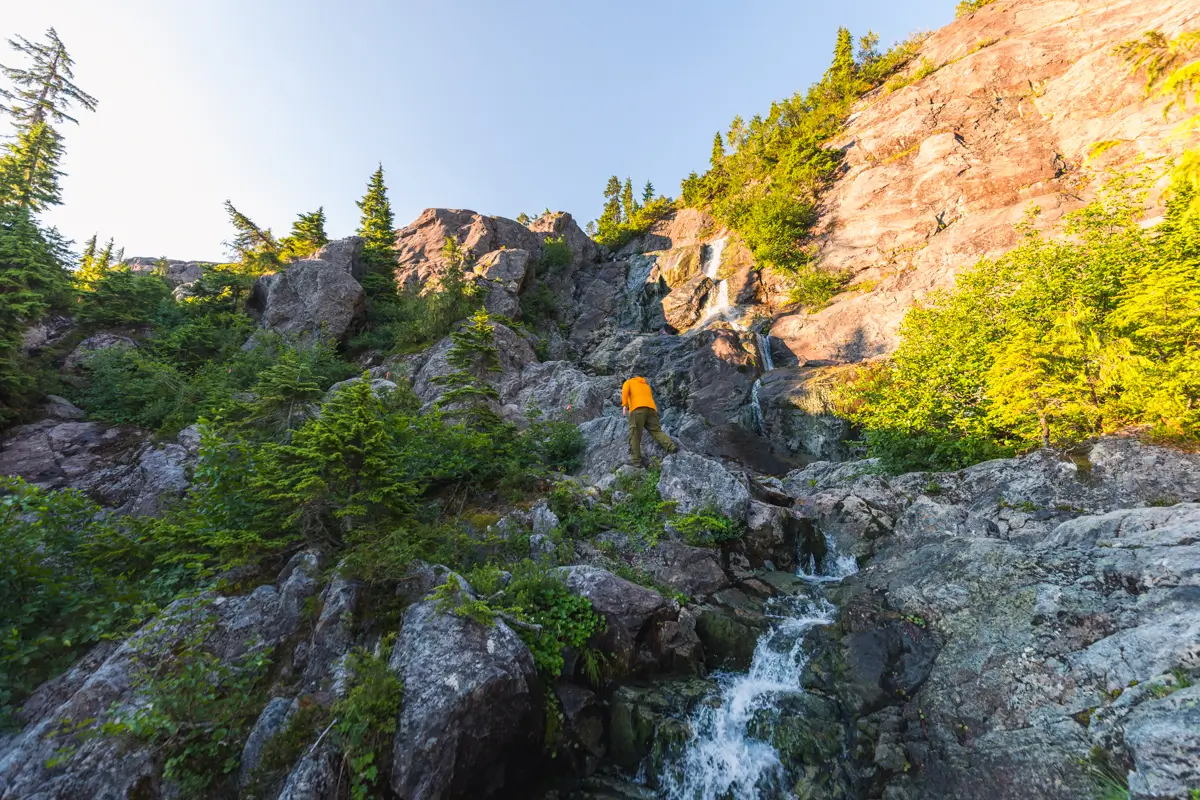
Crossing the stream again and continuing up the other side.
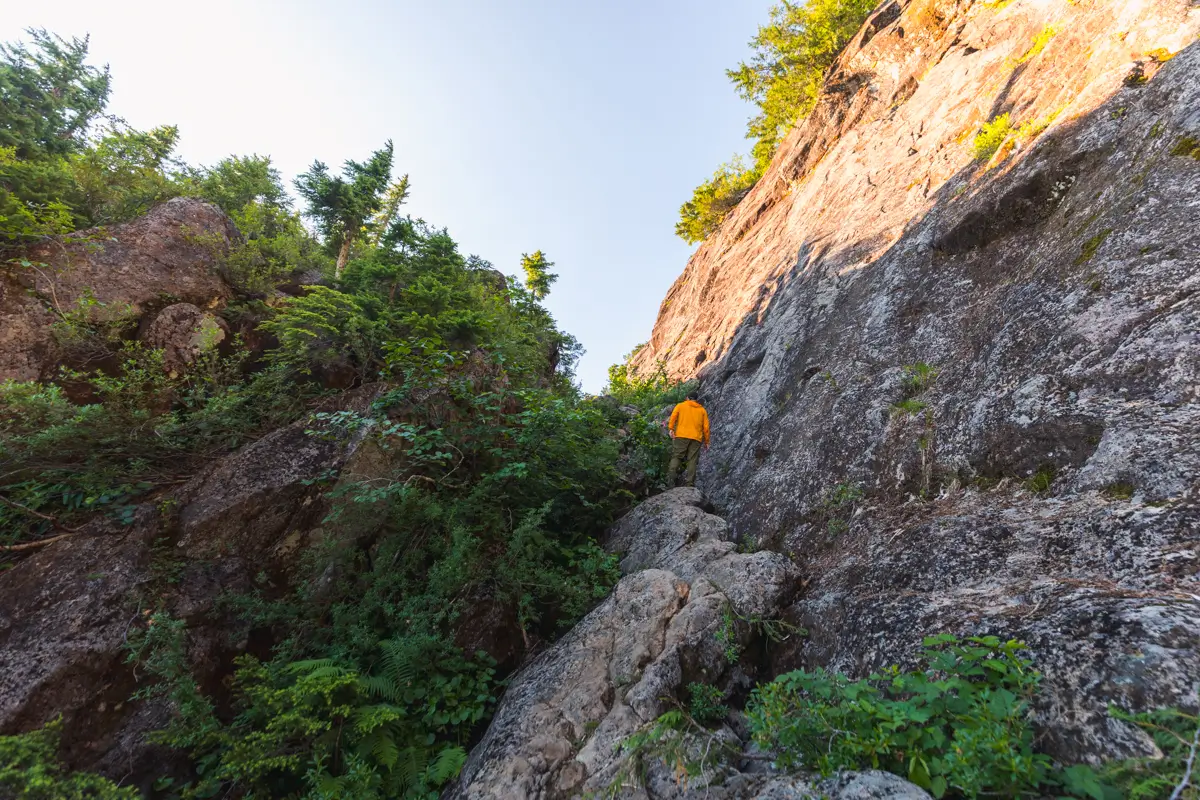
Nearing the end of the Triple Peak Lake hike now. The trail ascends up this crack, with some ight scrambling along the way.
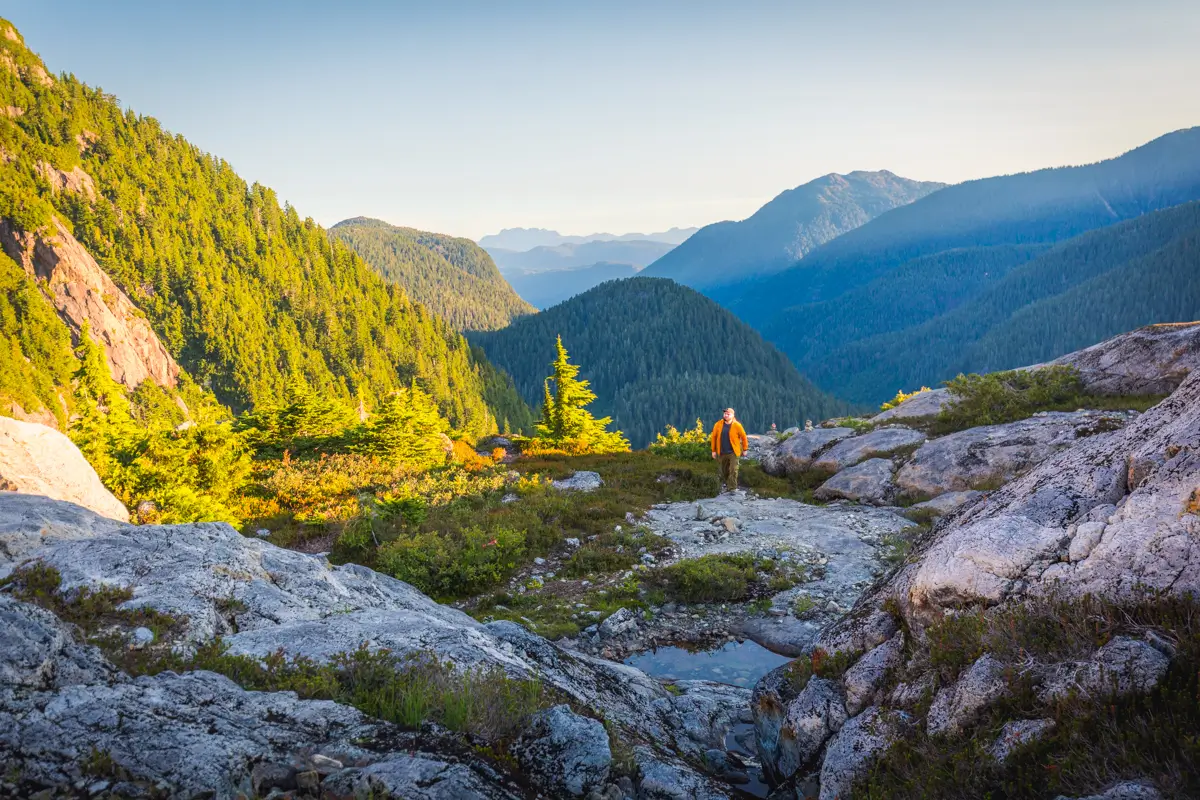
Views behind towards Strathcona Provincial Park. Not pictured here is 5040 Peak, visible out of frame to the right.
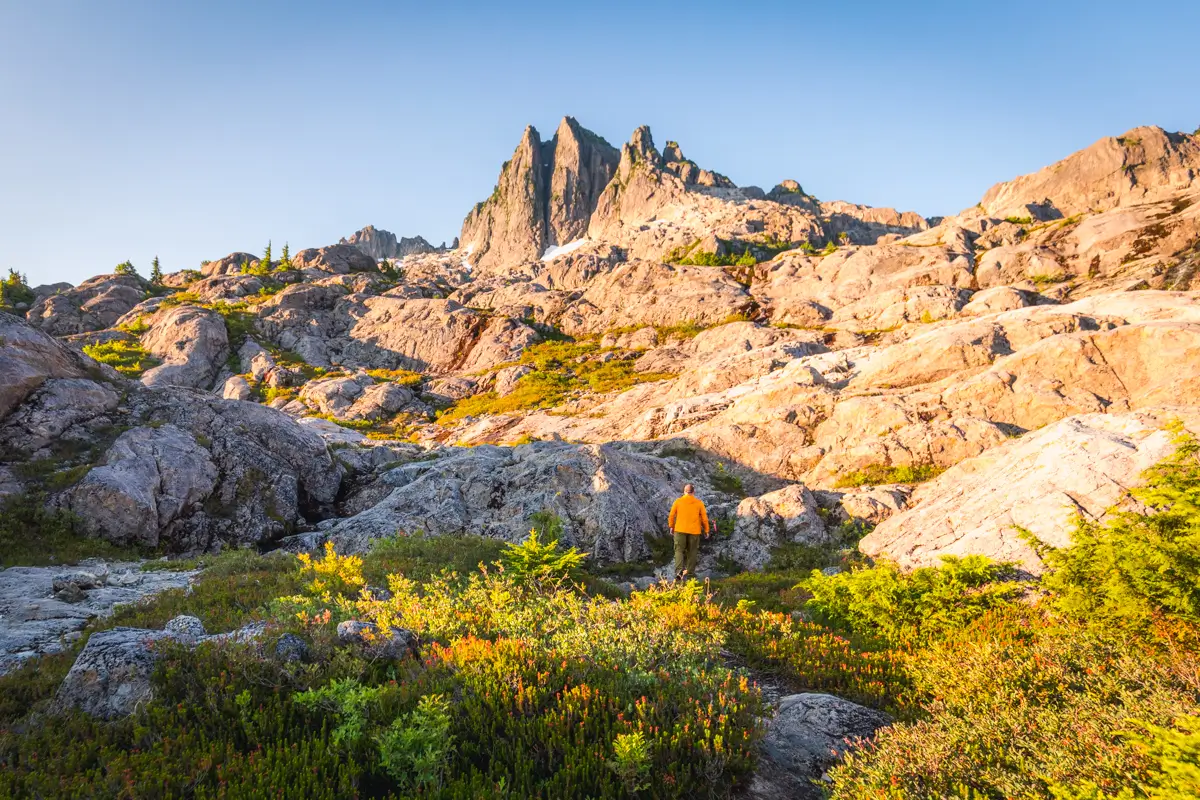
Triple Peak comes into view, with the lake below it not quite visible yet. Once you reach this point you’re basically done.
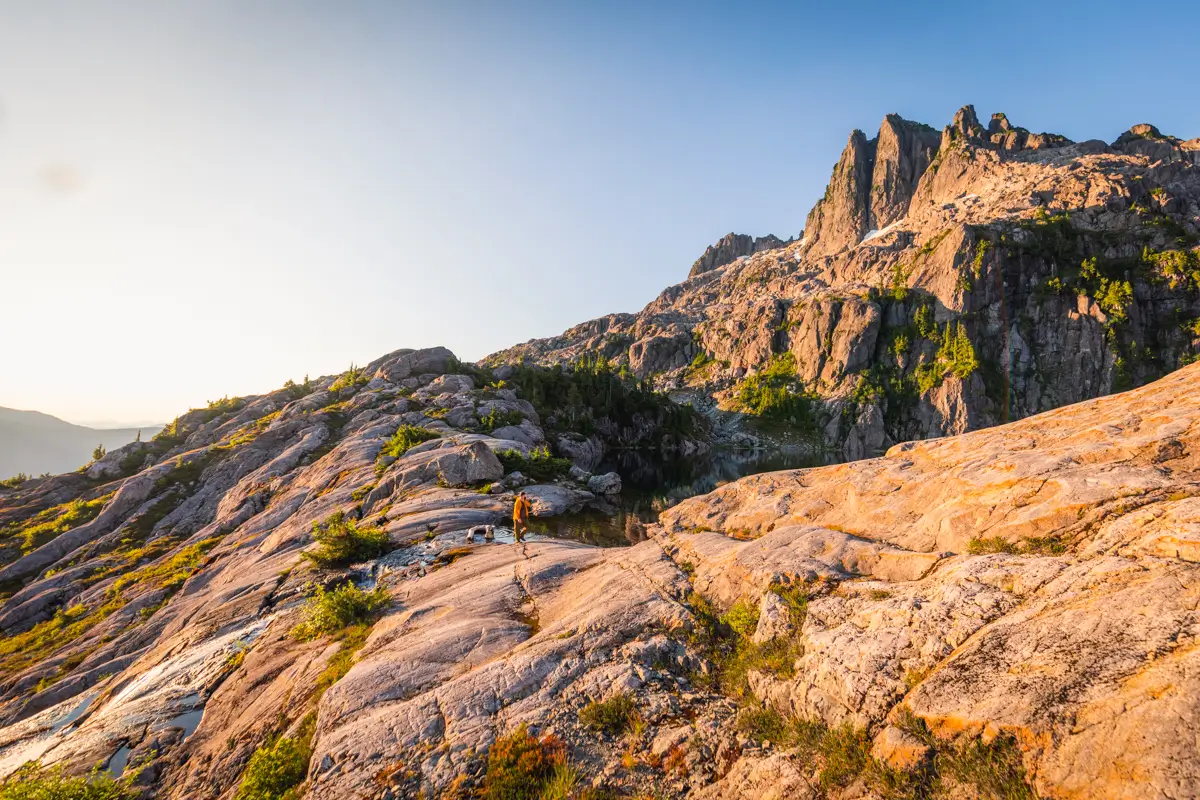
At Triple Peak Lake. It’s possible to explore along the lakeshore, and there are tons of great spots to get into the water for a dip if you’d like. Be warned, though there weren’t any mosquitos along the hike up to this point, I was swarmed by them the moment I reached the lake.
Recommended Hiking Gear



Water is a must whenever I’m hiking, especially if the sun is going to be out. My favourite water filter I’ve used is the Katadyn BeFree 0.6L, which unlike other water filters I’ve used packs up really small and lightweight. For hikes where I know there won’t be any readily available water sources along the way, I make sure to bring my own. The Hydrapak Stow 1L bottle is my go-to, for the same reason that it’s made of a soft plastic that folds up and doesn’t take up any more extra space than necessary in my pack. Finally, Aquatabs are another great option for purifying water, with one tablet being suitable for one litre of water. I previously used the Grayl water filter while travelling internationally, and though I found its hard body more convenient for day to day use and easier to drink from, it has a little too much bulk for my fast-and-light style of hiking.



The secret to all my photos of gorgeous sunset and sunrise mountaintop views? A lot of hiking in the dark. And let me speak from personal experience when I say that the last thing that you want to happen when hiking is to be caught in the dark without a headlamp. I used the Black Diamond Spot 400 for years and it worked great – until I lost it on top of a mountain somewhere. The only downside to it was having to worry about the batteries dying, though there’s also a slightly more expensive version that has a rechargeable battery. Nowadays I’m using the Petzl Actik Core, which is a bit pricier than the more budget-friendly Black Diamond, but is also brighter, more comfortable (in my opinion), and has a hybrid power system that is rechargeable but can also take AAA batteries if needed.
You won’t see me using trekking poles on shorter hikes often – but on long hikes and backpacking trips, as well as certain scrambles, they are an absolute lifesaver. I’ve invested in a high quality ultra-lightweight pair of MSR DynaLock Ascent carbon poles which, while pricey, I don’t regret one bit. If you’re not entirely sure how much use you’re going to get out of a pair of trekking poles, the best budget-friendly option would be the Trekology Trek Z 2.0. Amazon does sell a lot of cheaper Made in China-style trekking poles for cheaper, but these usually are much much heavier and not worth buying.
All the best and most long-lasting cables and power banks I’ve ever owned have been Anker. I once had a phone cable from them that lasted me over three years of daily use! That’s why I keep an Anker PowerCore Essential 20K power bank on me. Like many people I use my phone for a lot of stuff when hiking (checking in with family, using online maps, taking photos, flying my drone) so I like to be prepared for that low battery warning by having a backup power source on me just in case.



The only socks I ever buy for myself are from Darn Tough, and I almost always make sure to wear them when hiking. After years of having no problems only wearing these comfortable and rugged socks for hikes, I accidentally wore a pair of no-name socks on a hike last year and ended up with blisters on both feet. Safe to say I’m back to sticking with the Darn Tough. And the best part? They have a lifetime guarantee, meaning that if they ever wear out you can send them back for a brand new pair. For hiking footwear I go between a pair of lightweight approach shoes for quick and dirty mountain ascents or anything involving scrambling and more heavy-duty boots for longer treks. I’ve worn a couple different versions of the lightweight but super durable Arc’teryx Konseal FL 2 approach shoes for a few years now and am very impressed with the durability. I also really like the thick toecap that keeps me protected every time I stumble into a root or large rock. For longer, tougher, or muddier treks I rely on my LOWA Camino EVO GTX, which I find insanely comfortable and made of very high quality.



I wear my Ar’teryx Gamma Lightweight Pants on every single hike I go on, and on many days when I’m not hiking. After several years of abuse they are still holding together extraordinarily well, with only a few small holes from where I’ve fallen down and some slight stains from being repeatedly coated with mud. They’re lightweight, breathable, and super comfortable. For lightweight and breathable hiking tops I’m a big fan of both the Patagonia Capilene Shirt and the MEC Core Shirt. My Arc’teryx Squamish Hoody shows up in a lot of my photos. It’s super lightweight and packable, and does a great job of cutting the wind while also being pretty breathable. I also have an Arc’teryx Atom Hoody and Arc’teryx Beta LT that I pull out for cooler or wetter conditions.
I hope you enjoyed this guide to hiking to Triple Peak Lake on Vancouver Island! Feel free to leave any questions in the comment section below or to contact me directly via social media.
